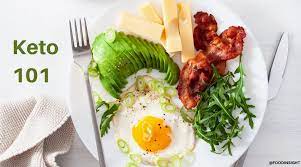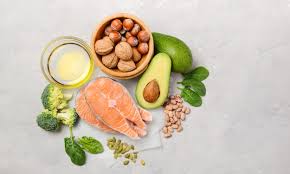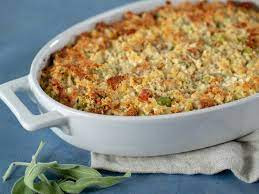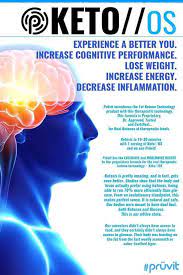How to Get Back on the Keto Diet and Achieve Ketosis Again
Having been on Keto now for years and years, I can attest to the fact that you will fall off the wagon occasionally. It happens. The issue is getting back on the diet. I discovered early that eating out caused me to stop following my diet. I always thought to myself, "I'll get back on tomorrow." but that day would not happen for quite a while.
Once you get off keto, your mouth demands that you fill it with all the "forbidden" things you have eliminated from your eating habits. It really becomes a battle between your mouth's desires and your own desire to return to Keto. I have experienced this battle several times and I can tell you it isn't fun, easy, or pretty.
Getting back onto your keto diet takes action and determination. What is really good right now is that there are more readily available keto items in the grocery stores (but be sure you are checking the labels--not all "keto" items are that). Another great improvement since I started way back when is the amount of people who are creating great recipes for this diet. Having good tasting and easy to prepare food greatly enhances your ability to return to your keto lifestyle.
Now, we will look at all the things you should consider when you fall off your diet and want to return to it. The good news is that you can always get back on the keto wagon and reestablish your state of ketosis, and we will explore practical tips and strategies to help you bounce back and achieve ketosis again quickly and effectively.
1. Reflect and Realign:
When you realize you have fallen off the keto diet, take a moment to reflect on the reasons why it happened. Was it a momentary lapse or a conscious choice? Identifying the trigger points will help you address them moving forward. Once you understand your motivations, it becomes easier to realign your goals and reaffirm your commitment to the ketogenic lifestyle.
I had to actually carry around a small notebook and make notes when I ate something not on my diet. I wrote about what I was thinking, what I was feeling and what I was doing at the time of the discretion. Actually, over time, this little book became very, very helpful and I identified many issues I was having with staying on the diet.
That was certainly an eye-opener and lead me to explore the real underlying issues at play. Once that was accomplished and dealt with, I was able to return to and stay on keto without much effort.
2. Ease Back Gradually:
Rather than making an abrupt transition, consider easing back into the keto diet gradually. This approach can help minimize the potential discomfort associated with a sudden shift in macronutrient intake. Start by reducing your carbohydrate consumption each day while increasing your healthy fat intake, allowing your body to readjust and enter ketosis at a pace that feels comfortable.
Although this is a really good tip, I am not really an "ease into it" kind of girl. I am more of an "all or nothing" girl. My problem was eating any carbohydrate filled food translated in my brain to permission to gorge myself on carbs. Not the way to get back on the wagon. So I had to skip this step; but you may find this the perfect step for returning to your diet. I encourage you to try it out if you think it will work for you.
3. Embrace Healthy Fats:
A key component of the ketogenic diet is incorporating healthy fats into your meals. Focus on consuming foods like avocados, nuts, seeds, coconut oil, and olive oil. These sources of healthy fats not only satiate your hunger but also promote ketone production, making it easier for your body to return to a state of ketosis.
This, too, is a great tip. I find that having mixed nuts close by gives me the crunch and chewing that my mouth desires; it helps to stop the complaining going on in my brain. I have used coconut oil and olive oil for a very long time, so that was not a problem. However, avocados make me violently ill, so I have to avoid them like the plague which is troublesome at times on this diet.
4. Practice Intermittent Fasting:
Intermittent fasting can be an effective strategy to help you jumpstart ketosis and regain control over your body's metabolic processes. By extending the time between meals, you can deplete your glycogen stores more rapidly and encourage the utilization of stored fat for energy. Start with a conservative fasting window and gradually increase it as you become more comfortable.
This tip has saved me so many times! I have discovered, while on keto, that I do best if I eat early in the morning and then again mid-afternoon. Doing this keeps me feeling full and satisfied. I rarely eat after 5 or 6 pm anymore and it doesn't bother me because I am not hungry after that anyway.
5.Plan Your Meals:
Meal planning is crucial when recommitting to the keto diet. Prepare your meals in advance to ensure you have access to keto-friendly options throughout the day. Focus on low-carb, high-fat foods, and incorporate an adequate amount of protein to support your body's needs. Having a plan in place will help you avoid impulsive decisions and maintain consistency.
This tip is where I struggle all the time. Since I live with people who are not on Keto, it is very confusing to have to prepare so many different kinds of meals. The problem I run into with meal planning is cooking keto for one person. I often end up with way too many meals of the same type and end up tossing them because I get tired of eating the same thing over and over. My space in both the refrigerator and freezer is limited, so meal planning is a struggle for me.
6. Incorporate Exercise:
Physical activity complements the ketogenic diet by promoting weight loss, improving insulin sensitivity, and enhancing overall well-being. Engage in regular exercise, combining both cardiovascular workouts and strength training. Exercise not only aids in achieving ketosis but also provides numerous health benefits.
I love to exercise and do so often. I walk daily with my dogs, I do Silver Sneakers exercises online, I do cardio with my daughter. I have always loved to exercise and so this is a no-brainer for me. I do understand that there are people who despise exercising and sweating. I actually know quite a few of them. For those people, I try to encourage things like walking while talking with friends , tai-chi in groups, yoga in a class. These all will count as exercise and are quite fun activities.
7. Prioritize Hydration:
Hydration is essential for optimal bodily functions and aids in the ketosis process. Make sure to drink enough water throughout the day to maintain hydration levels. Additionally, electrolytes, such as sodium, potassium, and magnesium, can become depleted during the initial stages of ketosis. Consider incorporating electrolyte-rich foods or supplements to support your body's needs.
I struggle with this constantly. I am a die-in-the-wool Diet Coke drinker, but I have managed to limit myself to no more than 1 or 2 a day (although I get extra large sized drinks). I really don't care much for water, but have discovered a carbonated flavored water that I like. I researched whether these two drinks would constitute drinking water and discovered that fluid is fluid. Although water will more easily hydrate you, any fluid you take in goes toward hydration in your body. In case you don't know, I am a science geek, so I love to research these types of things.
8. Practice Mindfulness:
Cultivating mindfulness can help you stay focused and committed to your goals. Mindful eating involves paying attention to the sensations of hunger and fullness, savoring each bite, and recognizing emotional triggers for overeating. By practicing mindfulness, you can develop a healthier relationship with food and maintain long-term success on the keto diet.
Since I worked 27 years as a nurse, I really struggle with this one, too. When I was working, I had to eat in a few minutes and I never really had the opportunity to enjoy or acknowledge what I was eating. I just stuffed my face so I could get back to the floor. Food was simply fuel; not something to enjoy or savor.
Now retired, I am working on being more mindful with my eating, but the habit from those years is really difficult for me to break. I have started another notebook to write down when I feel hungry; what I am doing at that time; how I am feeling emotionally at that time; and what it is I would like to eat. I am hoping this will work like before and allow me to identify my problem areas.
9. Seek Support:
Building a support system can significantly contribute to your success on the ketogenic diet. Surround yourself with like-minded individuals who share similar goals and can provide guidance and motivation. Joining online communities or finding a keto buddy can offer encouragement and accountability, making it easier to stay on track.
My family is very supportive of my choice to be on this diet. My oldest daughter and her husband also eat keto, so they are a source of support for me. There are groups online for support, but I am not much of one for talking with strangers online. However, I am not saying that you cannot find support online if that is your only choice. The people in the groups are usually very helpful, informative, and friendly.
10. Be Kind to Yourself:
Lastly, remember to be kind and patient with yourself throughout the process. Falling off the keto diet happens to many people, and what matters is your ability to bounce back and make positive changes. Embrace the journey as a learning experience and celebrate the progress you make along the way.
Definitely be kind to yourself. No one is perfect. Perfection is boring anyway. If you do fall off the wagon, dust off your rear, straighten your spine and get right back on the dang wagon. You can do it. I have faith in you.
Falling off the keto diet is not a failure but an opportunity to reassess and recommit to your goals. By implementing the strategies mentioned above, you can quickly get back on track and reestablish ketosis. Remember that transitioning back to the ketogenic lifestyle takes time, so be patient and stay focused on your objectives. With determination, planning, and support, you'll regain the benefits of the keto diet and continue on your path to improved health and well-being.

.jpg)
.jpg)














































